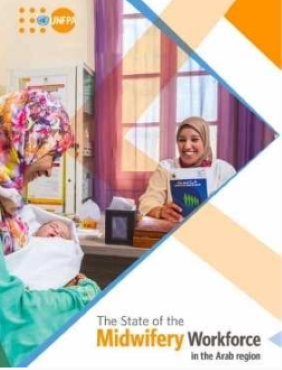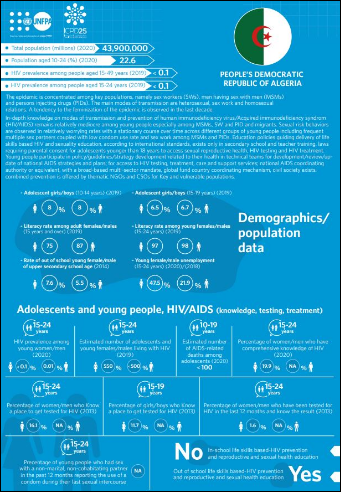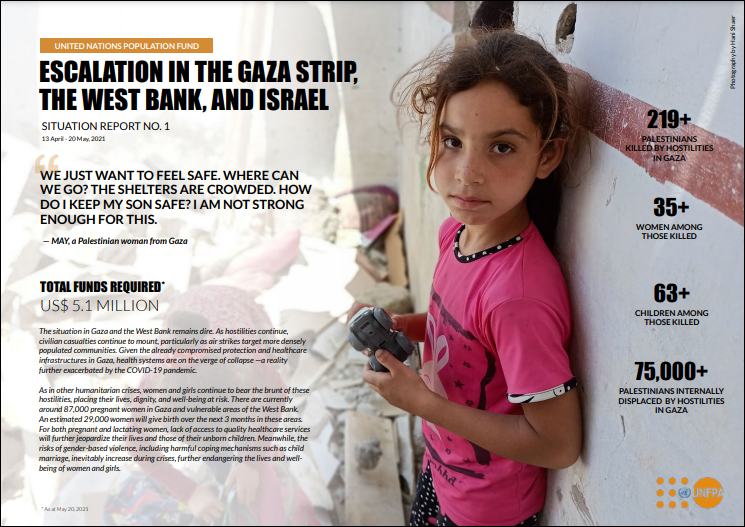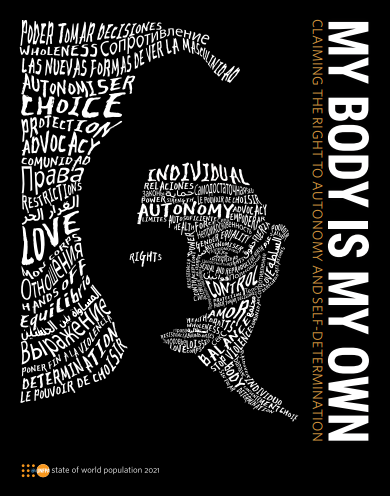You are here
New Releases

The State of the Midwifery Workforce in the Arab Region
This report provides an up-to-date evidence base to highlight progress since the last regional midwifery workforce report in 2015 and to project forward to 2030.

Situational Report #01 January - June 2021
Yemen remains the world’s largest humanitarian crisis and aid operation. A staggering 20.7 million people, 66 percent of the population, require some form of humanitarian assistance in 2021. The country situation, which is primarily driven by conflict and an economic blockade, has been exacerbated by COVID-19, heavy rains and flooding, escalating hostilities, currency collapse, decreased government capacity and access challenges.
Women and girls are acutely vulnerable. An estimated 73 percent of the over 4 million people displaced in Yemen are women and children, while approximately 30 per cent of displaced households are now headed by women, compared to 9 per cent before the escalation of the conflict in 2015.
An estimated 5 million women and girls of childbearing age, and 1.7 million pregnant and breastfeeding women, have limited or no access to reproductive health services. Over 1 million pregnant and breastfeeding women are projected to suffer from acute malnutrition in the course of 2021.
COVID-19, continues to spread across the country. By end June 2021, a total of 6,910 cases of COVID-19 and 1,359 associated deaths were reported. However, health partners remain concerned of significant under-reporting of cases. By end June, some 270,601 people in southern parts of Yemen received the first dose of a COVID-19 vaccine. Vaccination campaign in the northern parts of the country also commenced in June 2021 but limited to only health workers. UNFPA is a frontline partner of the COVID-19 response in Yemen. Since January 2021, more than 200,000 PPE items were provided to 50 hospitals and 100 health workers were trained on infection prevention and control.
Funding for the aid operation in Yemen remains limited, despite donors stepping up support compared to 2020. The 2021 Humanitarian Response Plan appeal of $3.85 billion has received less that 48 percent of the requirement. UNFPA’s $100 million humanitarian appeal for 2021 remained funded at 39 percent by mid-year.
Since January 2021, UNFPA's response has reached more than 1.2 million individuals with lifesaving reproductive health services, protection information and services and emergency relief, with support to 118 health facilities, 47 safe spaces, 8 shelters and 8 specialized mental health centres.
Related Content

TRANSCENDING NORMS
GENDER TRANSFORMATIVE APPROACHES IN WOMEN AND GIRLS SAFE SPACES IN HUMANITARIAN SETTINGS

HIV/AIDS Infographics - Algeria country profile
HIV/AIDS Infographics - Algeria country profile

The Population Development Composite Index 2020 Report
In coincidence with World Population Day, 11 July, UNFPA Arab States Regional Office (ASRO) launchs its Population and Development Composite Index (PDCI). The Index is a visionary tool that promotes a people-centered sustainable development agenda in the Arab region and allows tracking achievements towards the International Conference on Population and Development (ICPD), and related Sustainable Development Goals from a population development lens.

UNFPA Regional Situation Report for the Syria Crisis — April 2021
UNFPA Regional Situation Report for the Syria Crisis — April 2021

Escalation in Palestine - Situation Report No.2
Following the ceasefire agreed on Friday 21 May, the grave impact of the hostilities is becoming clear. Some 242 Palestinians were killed, including at least 66 children and 38 women, and at least 1948 people were wounded. At least 3,222 families (over 16,600 people) saw their homes damaged, according to the Ministry of Social Development.The health system in Gaza, already overwhelmed by many years of blockade of Gaza, and by the longstanding COVID-19 pandemic, is significantly overstretched. Nine hospitals were partially damaged and 19 health clinics were damaged in the hostilities, including one that sustained severe damage. In the West Bank, tensions remain high. Some 27 Palestinians have been killed including one woman and four children. More than 6800 people have been injured. New cases of physical attacks, harassment and prevention of access for healthcare workers, paramedics and ambulances are reported. As in other humanitarian crises, women and girls bear the brunt of these hostilities, placing their lives, dignity and well-being at risk. There are currently 87,000 pregnant women in Gaza and in vulnerable areas of the West Bank. Around 29,000 women will give birth over the next 3 months, and require access to essential healthcare services. Meanwhile, the risk of genderbased violence, including harmful coping mechanisms such as child marriage, often increase during crises, further endangering the lives and well-being of women and girls.

Escalation in the Gaza Strip, the West Bank, and Israel
Escalation in the Gaza Strip, the West Bank, and Israel

The State of the World's Midwifery 2021
The State of the World’s Midwifery (SoWMy) 2021 builds on previous reports in the SoWMy series and represents an unprecedented effort to document the whole world’s Sexual, Reproductive, Maternal, Newborn and Adolescent Health (SRMNAH) workforce, with a particular focus on midwives. It calls for urgent investment in midwives to enable them to fulfil their potential to contribute towards UHC and the SDG agenda.

State of World Population 2021 - My Body is My Own
Claiming the right to autonomy and self-determination